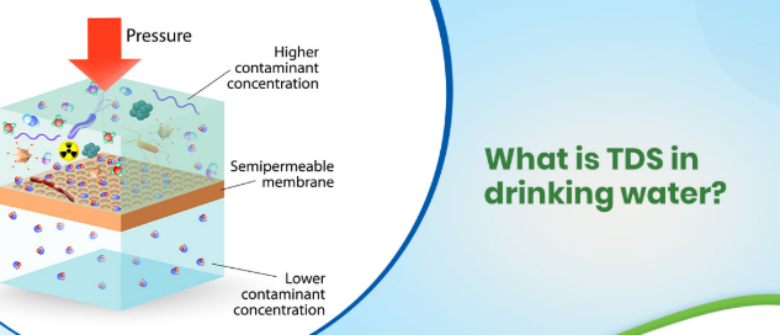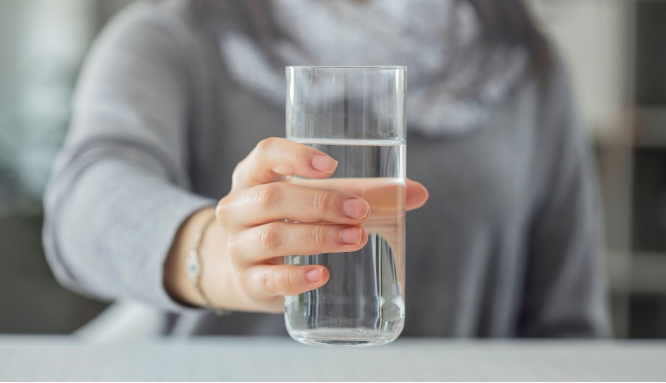Introduction
When it comes to drinking water quality, most people focus on visible clarity or taste. However, a less visible yet critical factor is TDS—Total Dissolved Solids. TDS refers to the amount of dissolved substances in water, and it plays a key role in determining water safety, taste, and the effectiveness of purification systems. Whether you rely on tap water, borewell water, or a filtration system, understanding TDS is essential for ensuring clean and healthy hydration.
In this article, we’ll break down what TDS is, where it comes from, its effects on health and water taste, and how purification systems manage TDS levels to deliver optimal drinking water.
1. What Is TDS in Water?
Total Dissolved Solids (TDS) refers to the combined content of all inorganic and organic substances present in water in molecular, ionized, or micro-granular suspended form. These substances can incl
- Minerals (calcium, magnesium, potassium)
- Salts (chlorides, sulfates, bicarbonates)
- Metals (lead, arsenic, iron)
- Organic matter
TDS is measured in parts per million (ppm) or milligrams per liter (mg/L).
2. Sources of TDS in Water
TDS levels in water can originate from both natural and human-made sources:

Natural Sources:
- Rock erosion and mineral springs
- Soil leaching
- Organic matter decomposition
Human-Made Sources:
- Agricultural runoff (fertilizers, pesticides)
- Industrial waste discharge
- Sewage and urban drainage
- Plumbing corrosion
Water from wells, rivers, or groundwater sources typically contains higher TDS levels than municipal water due to these influences.
3. What Is the Ideal TDS Level for Drinking Water?
According to the World Health Organization (WHO) and other health authorities:
| TDS Level (ppm) | Water Quality |
| 0 – 50 | Too low – may lack essential minerals |
| 50 – 150 | Excellent |
| 150 – 300 | Good – Ideal range for drinking water |
| 300 – 500 | Fair – Acceptable in most areas |
| 500 – 1000 | Poor – Not recommended for regular use |
| 1000+ | Unsafe – May pose health risks |
4. How TDS Affects Water Quality

4.1 Taste and Odor
High TDS levels can make water taste:
- Salty (due to sodium or chloride)
- Bitter (due to sulfates)
- Metallic (from iron or manganese)
Low TDS water may taste bland or acidic.
4.2 Health Impact
- Essential minerals: Some level of calcium and magnesium is beneficial.
- Toxic elements: Excessive lead, arsenic, or nitrate can pose serious health risks.
- Very low TDS: May not hydrate effectively or provide necessary electrolytes.
4.3 Appliance and Pipe Damage
High TDS water causes scaling in kettles, water heaters, and pipes, reducing efficiency and lifespan.
5. How to Measure TDS in Water
5.1 TDS Meter (Digital)
- Affordable and easy to use
- Dip the meter into water for an instant reading in ppm
5.2 Laboratory Testing
- Offers a detailed breakdown of specific dissolved substances
- Recommended for comprehensive water quality analysis
6. How Water Purifiers Manage TDS
6.1 RO (Reverse Osmosis) Systems
RO purifiers are the most effective at reducing high TDS levels. They force water through a semipermeable membrane that removes up to 95–99% of dissolved solids, including heavy metals and salts.
Ideal for:
- Borewell or groundwater with TDS above 300 ppm
- Areas with industrial or chemical contamination
6.2 UV and UF Purifiers
These systems do not reduce TDS, but they eliminate bacteria and viruses. Best suited for water with TDS below 300 ppm.
6.3 Mineralizers and TDS Controllers
RO filtration may remove beneficial minerals. To address this, many modern systems include:
- TDS Controllers: Retain essential minerals during purification
- Mineral Cartridges: Re-add calcium and magnesium to enhance water quality and taste
7. Choosing the Right Purifier Based on TDS
Before buying a water purifier, test your water’s TDS level. Here’s a guide:
| TDS Range (ppm) | Recommended Purification |
| 0 – 300 | UV/UF or Gravity Filter |
| 300 – 500 | RO with TDS Controller |
| 500+ | RO + Mineralizer or Advanced RO |
8. Tips for Managing TDS in Drinking Water
-Test your water regularly to track TDS changes.
- Avoid over-purifying – extremely low TDS water isn’t ideal.
- Maintain your purifier – change filters and membranes on schedule.
- Store water properly – use clean containers to avoid recontamination.
- Drink water with balanced TDS (150–300 ppm) for optimal taste and hydration.
Conclusion
TDS in water is a crucial factor in determining whether your water is safe, healthy, and pleasant to drink. While some dissolved solids are beneficial, excess TDS can lead to poor taste, appliance damage, and even health issues. Understanding your water's TDS level empowers you to choose the right purification method and maintain better water quality at home.
? Know your water, test your TDS, and purify wisely for a healthier lifestyle.
--------------------------------------------------------------------------------------------------------------
SANAKY VIETNAM., CO LTD - Manufacturer of Chest Freezer - Upright Cooler, Transformer, RO Water Purifier...
? Website: www.sanaky-vn.com
☎ Hotline: (+84) 986123903
 Vietnamese
Vietnamese  English
English  Chinese
Chinese  French
French  Spanish
Spanish  Russian
Russian  Arabic
Arabic  Portuguese
Portuguese